Category Archive for People + Pets
INTERVIEW WITH CRISPIN GLOVER: ACTOR, DIRECTOR. TOUR DATES: WHAT IS IT, IT IS FINE, EVERYTHING IS FINE, BIG SLIDE SHOW.
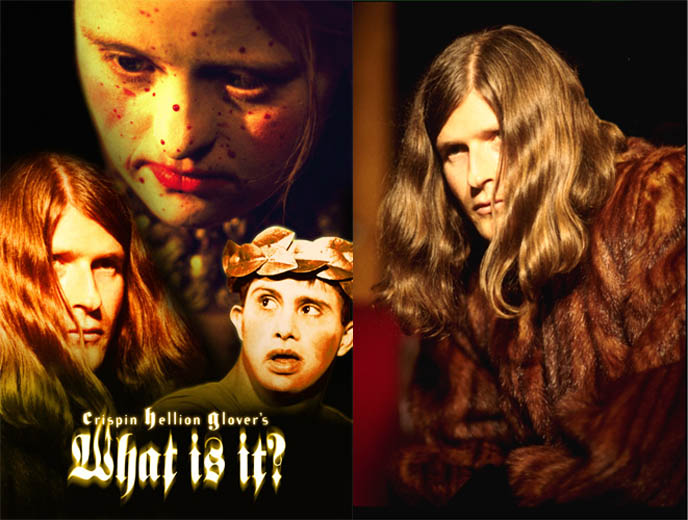
If you’ve been stalking my Twitter, you’ll know that Crispin Hellion Glover has been emailing me. You may know him best as an eccentric character actor, with gloriously dark turns in Willard, Alice in Wonderland (Knave of Hearts), and Back to the Future.
But Crispin Glover is a multi-platformed ringmaster — writer, film-maker, musician — who places his camera lens in the squirmiest of territories. The first film in his trilogy, “What Is It?” is described as “The adventures of a young man whose principle interests are snails, salt, a pipe, and how to get home.” In his new “It Is Fine! EVERYTHING IS FINE,” the main actor and screenwriter is Steven C. Stewart, a man with a severe case of cerebral palsy. Crispin is currently bringing his vaudeville act to Vancouver, Seattle, Portland, England — where he oversees screenings, readings, a big slide show and book signings that extend until dawn.
Longtime admirer and Andy Warhol/Home Alone reincarnate Rob Rafuse stirred up the following questions for Crispin. Read on for his fascinating answers about building a Czech soundstage, working with David Lynch, and dancing like a maniac in Friday the 13th.
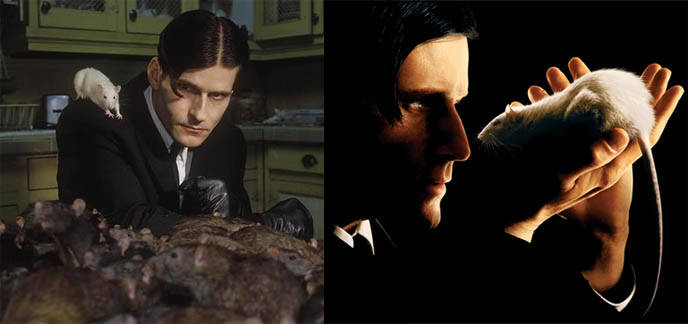
† When you are finished with the “What Is It” trilogy, do you plan on releasing it to DVD? If so, are you going to go with a distributor or are you going to do it independently, like with touring the films?
There have been smaller distribution companies interested in distributing the films. I have more wherewithal than they would, I am theatrically distributing these films that in this time is a more unusual fashion, but 100 years ago it would be the norm and it would be called “Vaudeville”. For various reasons it makes the most sense to distribute these films in this fashion. I am protective of the content of the film for financial reasons and because there is sensitive material in both the films and I have discovered that the forum that I have after the film is shown is extremely important, and the audience interaction with this Q and A session is really quite imperative for these films.
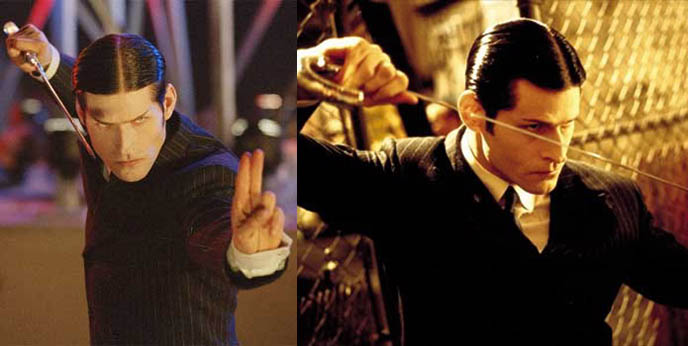
† Can you give us an idea of what the final film in the trilogy is going to be about? What are your plans afterwards — will you make more films?
I should not go in to detail for “IT IS MINE.” yet and I will not shoot that next. There are other projects outside of the trilogy that I will shoot next. I own property in the Czech Republic and am making a small soundstage out there to continue making my own films. It is another culture and another language and I need to build up to complex productions like “What is it?” and the existing sequel “It is fine! EVERYTHING IS FINE.” IT IS MINE. Is an even more complex project than those two films were so it will be a while yet for that production.
I have been working on three screenplays to work within the contraints of shooting on sets at my property. One of them is a screenplay for myself and my father to act in together. He is also an actor and that is the next film I would like to make as a director/producer. This will be the first role I write for myself to act in that will be written as an acting role as opposed to a role that was written for the character I play to merely serve the structure. But even still on some level I am writing the screenplay to be something that I can afford to make. There are two other projects I could make before that depending on set costs. I am currently working on two screenplays that may be more affordable to make first.
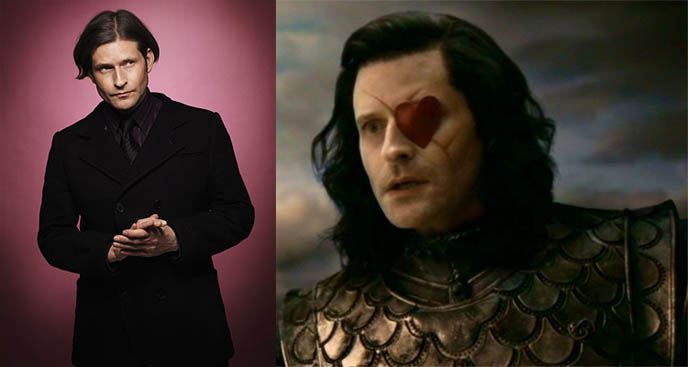
† You do a lot of independent personal films but as of late you’ve been diving into horror with films like Willard, Simon Says and Wizard of Gore. What attracts you to this genre/aesthetic?
I am very careful to make it quite clear that What is it? is not a film about Down’s Syndrome but my psychological reaction to the corporate restraints that have happened in the last 20 to 30 years in film making. Specifically anything that can possibly make an audience uncomfortable is necessarily excised or the film will not be corporately funded or distributed. This is damaging to the culture because it is the very moment when an audience member sits back in their chair looks up at the screen and thinks to their self “Is this right what I am watching? Is this wrong what I am watching? Should I be here? Should the filmmaker have made this? What is it?” -and that is the title of the film. What is it that is taboo in the culture? What does it mean that taboo has been ubiquitously excised in this culture’s media? What does it mean to the culture when it does not properly process taboo in it’s media? It is a bad thing because when questions are not being asked because these kinds of questions are when people are having a truly educational experience. For the culture to not be able to ask questions leads towards a non educational experience and that is what is happening in this culture. This stupefies this culture and that is of course a bad thing. So What is it? Is a direct reaction to the contents this culture’s media. I would like people to think for themselves.
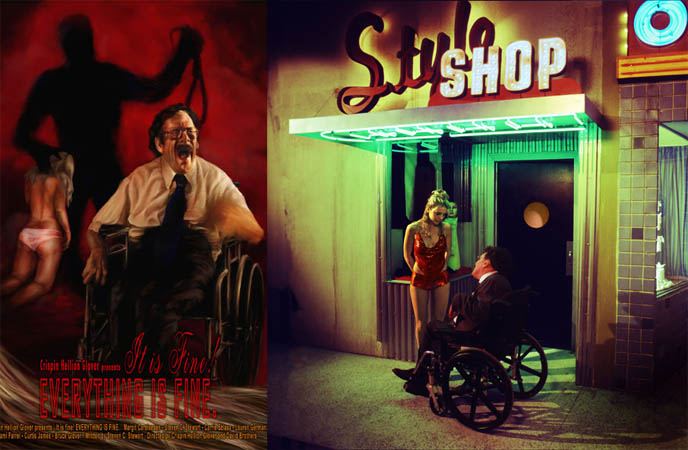
† In 1993 you released your CD “The Big Problem.” Do you have any future goals of doing another album? If so, what will it sound like?
There exists another group of recordings that have been almost completed for a long time but my mind and energy has been involved with completing and then touring with the film. There is another album’s worth of material recorded that needs a little work done to it to release it, but it is not where my mind has been. At some point I will complete those recordings and release them, but again my films are my priority.
† When doing the film Rubin and Ed, did you come up with the style of Rubin Farr or was that in the script? Is there any chance that this character will make another appearance on film?
I have never confirmed nor denied in media whether I appeared on the David Letterman show and your question may lead towards a conclusion to that query so I will people figure it out on their own by viewing these clips in chronological order. The dates are accurate below but may not be accurate on YouTube, please use the below dates for accurate reference.
David Letterman 1986, Clowny Clown Clown video 1989, Rubin and Ed 1991, Little Loca 2005.
† A lot of people must be curious about what kind of movies you like. What are five of your favorite/must-see films and why?
My favorite film lists go in to the hundreds and there are a lot of my very favorite films that are just one offs where the director only made one film that I like. Many of the below directors have made multiple films that I admire.
Werner Herzog, Rainer Werner Fassbinder, Luis Buñuel, Stanley Kubrick, Todd Browning, FW Murnau, Fritz Lang, Akira Kurusawa, Frank Wysbar, Milos Foreman, Roman Polanski, Frederico Fellini, David Lynch, John Waters, Russ Meyer, Karel Zeman, Abbas Kiarostami, Wong Kar Wei, Gaspar Noe, Orson Wells, John Cassavetis, Dennis Hopper, Timothy Carey.
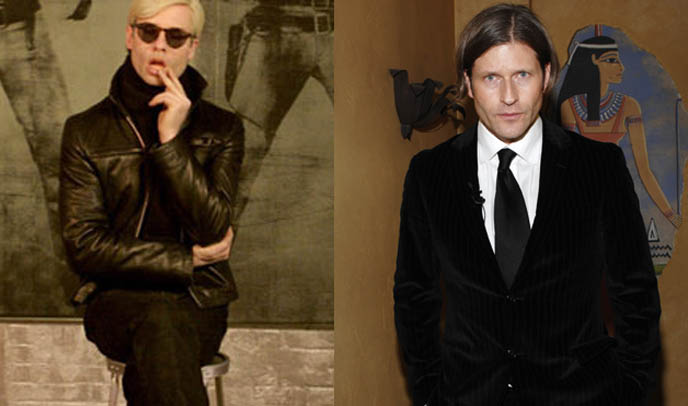
† In the film The Doors you played Andy Warhol. Did you ever meet Warhol and how was it playing such an iconic person?
I shot that film in 1990. To my knowledge I was the first person to portray Andy Warhol in a feature film. I had met Andy Warhol and talked with him a bit at Madonna and Sean Penn’s wedding in 1985 five years previous to portraying him. After I spoke with him I stood back and watched him and how he moved. I thought he would be an interesting person to play some time. The first time I hard about a film that had him as a character was for the Doors film and I pursued the role and auditioned for Oliver Stone. I did have certain concerns about how to portray the character but many of the concerns were about having the character say less and Oliver Stone was very good to work with as a director.
† You worked with David Lynch in “Wild at Heart” — the two of you together seems like a dream mash-up, and Eraserhead obviously had some influence on you. What was it like working with Lynch? Got any favorite memories or stories from the experience?
When I was 16 in 1980 and I had learned how to drive I would go see Erasherhead playing midnights at the Nuart over and over. I was in acting class at the time and there is no doubt that the film had influence on my acting. It was great to work with him on Wild At Heart and understand the true character psychology motivating the sort of behavior I had admired in his film Eraserhead. David Lynch specifically had a business influence on What is it? because he had agreed to executive produce a different film for me to direct. This film will ultimately be part three of the trilogy this film will be titled IT IS MINE.
† I must ask… Friday the 13th, part 4. Your dance. Where did you come up with that?
I asked for them to play “Back in Black” by AC/DC when I was supposed to dance in that scene. That was the dance I came up with for it. They did not use “Back in Black” in the soundtrack. Some people have put a clip of it up on YouTube with the AC/DC track, but it is not synched correctly. It was certainly an unusually way to dance to that piece of music but the motions of the dance fit properly to that song if it correctly synched.
† How do Canadians and people from other countries react to your films, as opposed to an American audience?
Spontaneous discussions and even arguments have erupted amongst audience members with each other during the Q and A session for What is it? I consider this to be positive as it means people are having strong thoughtful reactions to the film. I have found that the people that have the most aggressive questioning about the film are in the US. So far I have shown the films in the US Canada, Europe, Japan and Australia. It makes sense to me that the most aggressive questions are in the US because the film it very much reacting specifically to US media. It is fine! EVERYTHING IS FINE. has a more universal reaction wherever I show it. That is because the film operates with an emotional catharsis for the Steven C. Character and that emotional catharsis is not divisive by media influence whereas What is it? is a my psychological reaction specifically to US corporate control in the last 30 years.
† You write, act, direct, make albums… is there anything you’d like to do that you haven’t done?
I am very much concentrating on continuing to make my own films.
Don’t miss Crispin Hellion Glover’s current tour! Each event consists of “different combinations of the following”: Big Slide Show (one hour dramatic narration of eight different profusely illustrated books he has made over the years), film screening, Q & A session, book signing. The dates, venues and showtimes are listed here.
Are you an admirer of Crispin Glover? What do you think of his corporate criticisms? His alternative approach to creating and distributing art?
Japanese Word of the Day: Matomeru = Gather, bring together, organize
Song of the Day: Crispin Glover’s ‘Ben’ video from Willard.
SHARE & COMMENT
SEBASTIANO SERAFINI セバスティアーノ セラフィニー : MODEL, ACTOR, SINGER IN TOKYO JAPAN. LUCA, NIHONJIN NO SHIRANAI NIHONGO 日本人の知らない日本語

Recently, you’ve been seeing a lot of this pretty face on La Carmina blog. Who exactly is Sebastiano Serafini ( セバスティアーノ セラフィニー )? When I posted the Candy Spooky Theater video, a few of you recognized him as a regular cast member in the Japanese TV drama Nihonjin no shiranai nihongo (日本人の知らない日本語).
Seba is a successful model, stylist, actor and singer working in Tokyo, Taiwan and Hong Kong (and right now, LA). I’m sure you’re aching to know: what is Sebastiano’s story? How did he arrive at these dream jobs? So I tied him up and subjected him to a thorough interrogation. Hope you enjoy the interview as much as I did!
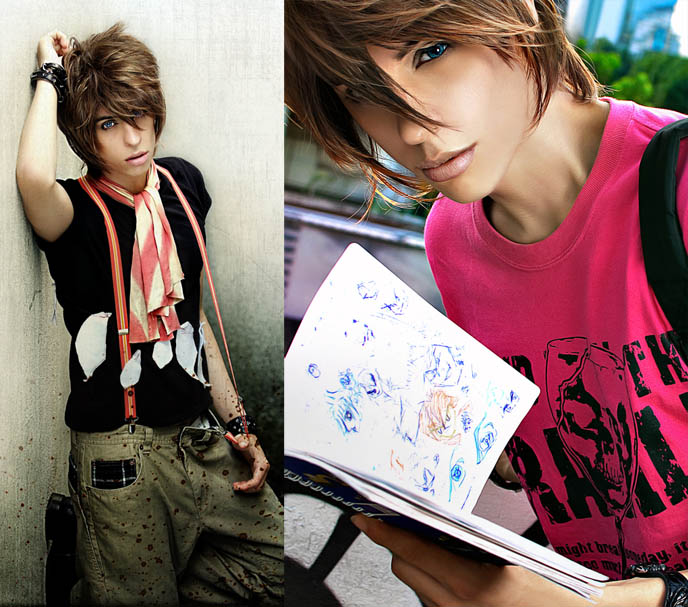
LA CARMINA: Tell me about your background, and how you launched your career as a model.
SEBASTIANO: I come from a small village in northern Italy. At age 10, I auditioned and won a role in an Italian TV drama. When I was 15, I was discovered by a Roberto Cavalli scout, and decided to work in Milan as a model. Ever since, I’ve been working and supporting myself. I modeled in Hong Kong and Taiwan for a few years. In April 2009, I moved to Tokyo and have been here ever since (although I often travel for jobs).
LA CARMINA: Which languages do you speak?
SEBASTIANO: I speak Italian, Japanese, Mandarin and English, thanks to my mixed heritage.

LA CARMINA: What type of modeling work do you do in Tokyo?
SEBASTIANO: I am the main model for several brands, including BlaBlaHospital and Stand Up! The Fragile. I’ve modeled for h.NAOTO, Paul Smith, True Religion, Diesel, Gstar, Nike and Uniqlo. This month, I was interviewed for Fashion TV, walked in a hair show for Toni & Guy, and was in advertisements for Sony and Casio. I also styled and modeled 10 brands for a CNN article, as well as other designer items for a secret project. On January 2nd, I will be in a TBS variety show (Tokyo readers, please watch!)
LA CARMINA: How do you get model jobs in Tokyo?
SEBASTIANO: I’ve been working for years as a model before I came to Japan, so I built up a portfolio and references. I started with a Japanese modeling agency, but now I freelance. That way, I have the freedom to do acting work as well. Many of my jobs are through referrals and connections.
LA CARMINA: Was it hard to become a model in Japan?
SEBASTIANO: It was difficult when I first moved here. I don’t fit into the usual white, Asian or bi-racial looks that are in demand. But my employers had good experiences working with me, and networking led to more jobs. The industry is all about building relationships.

LA CARMINA: Tell me about your work in Japanese acting.
SEBASTIANO: This year, I was a regular in the TV comedy-drama, Nihonjin no shiranai nihongo (日本人の知らない日本語). The story centers on a Japanese language teacher (played by Riisa Naka), and I’m one of the foreign students in her class. The DVD for the first season was just released. My character became quite popular, and I received over 400 fan letters and presents! I just wrapped filming in a movie that will be out next year, but the details are secret for now.
LA CARMINA: Nihonjin no shiranai nihongo is adapted from a manga. How is your character different from the original version?
SEBASTIANO: In the manga, my character is named Louie and is a French otaku. The script wanted me to have straight short hair and wear nerdy t-shirts… but thankfully, the producers liked me and tailored the role to be closer to my personality. The character is now an Italian student named Luca. I wear punk clothing by BlaBlaHospital and other designers I model for, and have Visual Kei style hair. The manga artist, Nagiko Umino, told me she liked how I played the character, so that makes me happy.
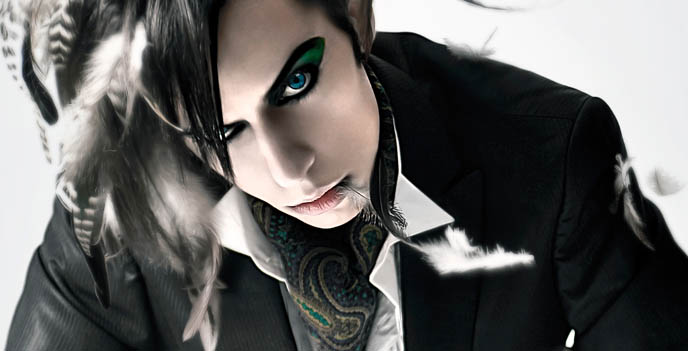
LA CARMINA: In addition to the acting and modeling, you are working with prominent Japanese music producers on your first album. How did this come about?
SEBASTIANO: I met various musicians and producers through my work, and they offered to work with me on my music. I’m collaborating with a composer who works with Ayumi Hamasaki, SMAP and Yuna Ito.
LA CARMINA: What can we expect?
SEBASTIANO: Most of the songs I’ve done so far are ballads, but the new music I’m working on will have a J-rock sound. I am currently deciding which record label to sign with, and hope to have a CD out at the end of next year.

LA CARMINA: What’s your advice for people who want to succeed as models, actors or singers in Tokyo?
SEBASTIANO: Do more than people expect of you. You’ll gain a good reputation, and people will want to keep working with you. It’s good to network and think of ways to bring people together. For example, I introduced the BlaBlaHospital designer to the stylist of my TV drama, and I am going to collaborate with a major fashion brand as a designer and model. Right now, I’m collaborating with La Carmina and LA Weekly on a major photo feature… can’t wait to show you!
LA CARMINA: What is your five-year goal?
SEBASTIANO: I’d love to be on Kamen Rider. And it would be my dream to have a video game or manga base a character design on me. I hope I can continue growing with my music as well.

Want more photos and interactions with Sebastiano Serafini? Come join his Facebook fan page ( セバスティアーノ セラフィニー ) and Twitter. Don’t forget to add the La Carmina Facebook page and Twitter too!
Did the interview inspire or surprise you? Is there anything you’d like to ask Sebastiano? Please feel free to leave him questions in the comments.
PS: Click to see to all the stories and cute photos from Sebastiano Serafini’s trip to LA.
Japanese Word of the Day: Isshoukenmei = Work hard, with your best effort
Song of the Day: セラフィニー セバスチァーノ – Sebastiano sings Shayne Ward – Breathless





 LA CARMINA
LA CARMINA






